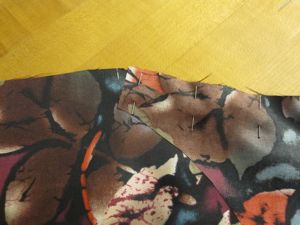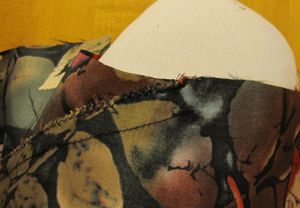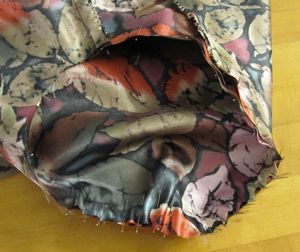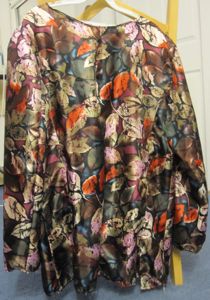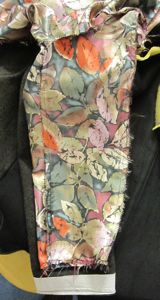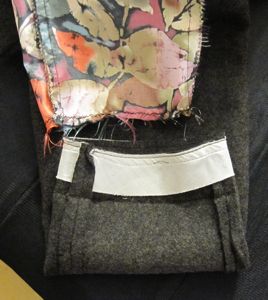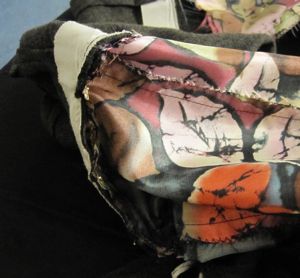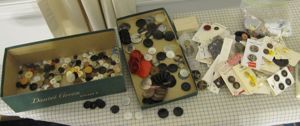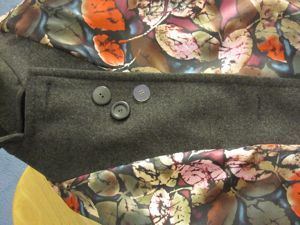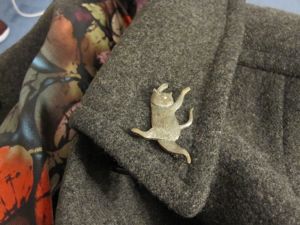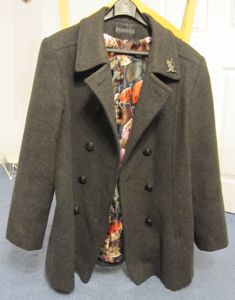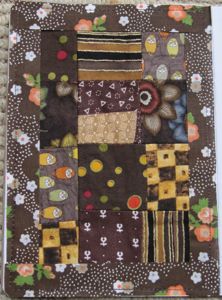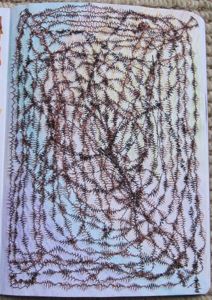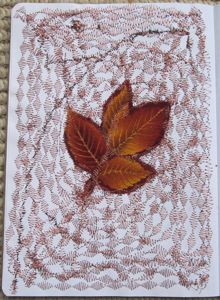Winter’s dawn makes me think of hats. In the late winter (which here unfortunately extends into April) I will finish my summer hat, I’ve decided. For now I will take a stroll down hat-memory lane.
I have a very large head, so it is rare for a commercial women’s hat to fit me. I had one that was sized M/L (there was also S/M) and it barely fit. I didn’t wear it much because it was snug enough to cause near-instantaneous hathead.
Men’s hats work a little better. In college I had a furry black hat I called the Cossack hat, snitched from my dad, which served me very well until I lost it. I was walking across campus with it under my arm and a large box or something in my hands, dropped it without noticing, and couldn’t find it upon retracing my steps. I have one men’s hat now, the Two Dollah Hat, which is a wide-brimmed straw hat for summer. The fabric summer hat will supplement that in an easier-to-transport fashion.
One of my earliest hatmaking efforts was a patchwork cloche. It was all the same fabric – a wool remnant from my college’s production of King Lear – but the shaping was from patchwork. I freehanded it, abutting the edges and zigzagging them together, shaping it over my knee. I loved that hat though it was not very warm. I can’t remember why I got rid of it; perhaps the wool started bothering my forehead. I seem to be getting more sensitive to it with age.
Later I decided to make a wide-brimmed snow hat. The inspiration was a 1960 photo from my costume history book.
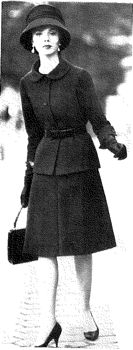
Figure 20-19. Culotte suit by Norman Norell. 1960. (Photograph by Frances McLaughlin-Gill, Vogue). From p. 611 of The History of Costume, 2nd ed, by Payne, Winakor, and Farrell-Beck, copyright 1992, HarperCollins Publishers.
I mostly like the way it turned out, but the outside and inside didn’t fit together properly, so I had to open up the inside to match and then add a padded roll to the base of the hat to get it to fit my head. Needing to make a hat smaller to fit me is a novel experience. I still like the hat, though. The lining is a dark green satin and the blue ribbon just above the brim was given to me on a birthday gift from a high school friend who shared my birthday. There is a little snowflake charm sewn front and center, that for some reason people fixate on. One person: “oh look, you have a little asterisk!” Another person: “and all the snow goes zzzzzzip! (pokes charm) and sticks right here.” This gray wool is likely also a remnant from King Lear, although I don’t remember for sure.
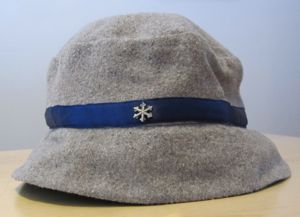
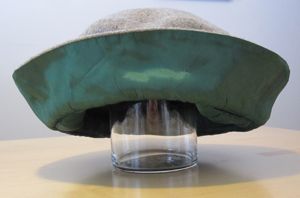
My biggest (and only successful?) knitting adventure was a big winter hat. I should have pre-washed the yarn, since it got very loose and floppy when I washed it after making it, but it still does the job. I knitted a very large rectangle, sewed it into a cylinder, gathered each open end tightly so it was more football-shaped, put one end inside to meet the other and sewed them together, and then folded up the opposite (already-doubled) edge to form a brim. The doubled gathered points sit at the crown of my head.
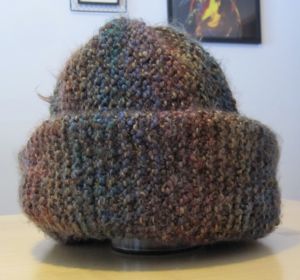
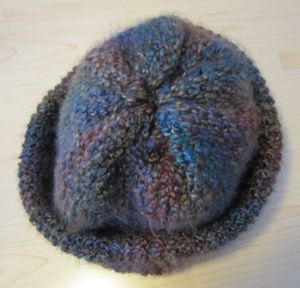
Most recently (previous to the current summer hat efforts) I made a fleece hat. I was away from home for the fall semester, and part of my fitness efforts was going to be jumping rope in the backyard of the place I was staying. I knew I would be too warm in my full winter gear, but I figured a hat and gloves would keep me warm enough while I was warming up through activity. I bought a pair of lightweight knit gloves but decided to make the hat, so one Friday after work I bought a remnant of shark-print fleece and a bag of big plastic buttons. I didn’t have my nice shears or a sewing machine, so I cut everything with small scissors and hand-sewed it. I was done by Saturday evening. It didn’t fit as snugly as I’d intended, but it was good enough (at least with the grabbiness of fleece) to stay on. And who wouldn’t want a shark hat?
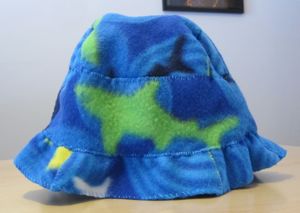
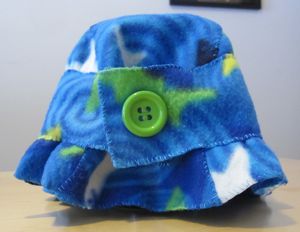
It has occurred to me I ought to crochet myself a hat that is dressier than Shark Hat, warmer than the snow hat, and less bulky than the knit hat. You know, in my copious free time. 🙂
